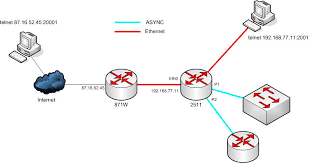Bandung, Telkom University - While studying CCNA and CCNP, you may come across terms that don't make sense. (OK, not often!) One such term is "reverse telnet". Candidates for Cisco certifications know that Telnet is simply a protocol that allows them to remotely connect to network devices such as routers and switches.
But what is reverse telnet and why is it so important for a Cisco CCNA/CCNP home lab setup?
When a remote user who wants to remotely control a router or switch initiates a telnet session, a reverse telnet session is initiated when the host device itself impersonates the telnet session. CCNA/CCNP home labs have reverse telnet configured and used on the access server. Access Server is not the white box server most of us are used to. An access server is a Cisco router that can connect to multiple routers and switches in a single session without running rollover cables between devices.
The access server uses octal cables to connect to other routers and switches in the home lab. Octal Cable has one large serial port that connects to an access server and eight RJ-45 connectors that connect to other home lab equipment. The access server needs an IP host table to do reverse telnet.
An IP Host table is easy to put together (and you better know how to write one to pass the CCNA!). The IP Host table is used for local name resolution, taking the place of a DNS server. A typical access server IP Host table looks like this:
- ip host FRS 2007 100.1.1.1
- ip host R3 2003 100.1.1.1
- ip host R1 2001 100.1.1.1
- ip host R2 2002 100.1.1.1
- ip host R4 2004 100.1.1.1
- ip host R5 2005 100.1.1.1
- ip host SW1 2006 100.1.1.1
- interface Loopback0
- ip address 100.1.1.1 255.255.255.255
- no ip directed-broadcast
This configuration will allow you to use your access server to connect to five routers, a frame relay switch, and a switch without ever moving a cable.
When you type "R1" at the console line, for example, you'll be connected to R1 via reverse telnet. If you have a smaller lab, an access server is still a real timesaver and an excellent investment. And by getting a static IP address to put on your access server, you can even connect to your home lab from remote locations.


